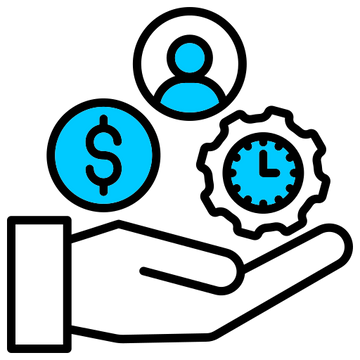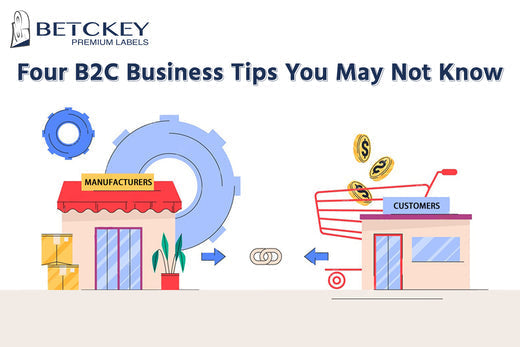

Removable Film Labels
Written by: Beichen Lu
|
|
Time to read 4 min
Recently, I received feedback from one of our customers asking me to share some B2C business tips. He is new to B2C business and runs both his Amazon store and a direct-to-consumer (D2C) website.
Indeed, I have much more experience in B2C than B2B business. Here are four tips based on my experience in the B2C business.
Table of Content
You all get familiar with telling your customers what your product is, how your product is like, and why they should choose you. But many B2C product pages actually do really bad on this. Those operation people or content creators only tell product features but no product benefits. That’s totally wrong. You need to realize that customers care about benefits they get from your product, not features.
Let's take it from an example. The 360° Camera on your sedan—this is the product feature. The 360° Camera helps you park safely, confidently, and accurately in any complicated, crowded urban area, like the roadside in Manhattan or the challenging uphill areas in San Francisco. You never need to carefully maneuver your sedan back and forth, enduring the annoying, continuous honking from drivers blocked by you.
This is the product benefit of the 360° Camera. You need to tell your customers what benefit your product will provide to them and why this feature is worthy of investment. Don’t let them explore it themselves because they are busy. Some of you may say people with experience will realize that without your notification. That’s correct! But what about potential customers who do not know how to drive yet? What about people planning to go to New York City but are unaware of how challenging parking can be?
Are you going to ignore them? Remember, the fundamental way of making a profit in business is satisfying your customer’s needs at a suitable price. Tell your customers how your product satisfies their needs directly. Don’t just list several features and let them guess. They are all very busy now, so save their time and let them know your product benefits in a short time.
This is an advanced tip from the last one somehow. When you are trying to tell them your product benefits, make it simple and avoid terminology or abbreviations. I am pretty sure most of your customers are well-educated, but that does not necessarily mean they know everything. When it comes to B2C business, your customers vary in terms of age, income, industry, and educational background. So, do not ignore customers who are new to your product category when editing your product benefits or updating your product FAQ and user manual.
Make it as simple as possible so that even 6-year-old kids can understand it as long as they follow your instructions. Why? Because you never know what problem will occur for which exact customer. Any negative review from a frustrated customer who cannot fix a problem due to a hard-to-read manual can significantly impact your sales.
I often come across many product pages that are visually appealing but lack essential product information. I even know some operational associates sacrifice product information illustration due to aesthetic considerations, thinking they need to attract customers first.
It's true that when customers look at these product pages, they are initially drawn in by beautiful media. However, they may struggle to make a decision due to a lack of essential product information such as specifications, recognizable benefits, and warranty details. These shortcomings can lead customers to hesitate even if they are aware of your free return policy.
Why? Because there is still a time cost and opportunity cost associated with returns and refunds. People are busy every day, and the prospect of driving to their local UPS store to drop off a return can create additional stress. Why not just relax on their sofa and watch a football game with a tasteful ice cream? Therefore, it is crucial to illustrate your product information and benefits first, making it clear that this is the product they need, and then consider aesthetic values later. When there is a conflict, prioritize giving up the aesthetic value and ensuring the product illustration without hesitation.
This is the first thing I learned when I was new to the B2C industry. I was running a camping product store on Amazon and found out that many big brands in the camping industry edit their product pages with very few details. In other words, they just mention specs with boring numbers instead of telling their customers what their products bring to them and how they work.
Then I created an A/B test of A+Content (the bottom part of the Amazon product detail page) with version A that clearly mentions all benefits and specs, and version B only mentions product specs like big brands do.
After a 4-week A/B test, the consequence is very clear: I drove 37% more sales on version A that illustrates product benefits and information clearly than on version B that only mentions product specs like big brands. If the big brand sells better than you, it does not mean they did the right thing. Those big brands with several decades of history already have tremendous brand awareness, so customers tend to trust and tolerate them more.
But you are different. When competing with those big brands in the B2C business, especially on e-commerce websites where all products are heavily competing, you have to do something more to counteract their advantage in brand awareness.
When involving B2C business, your customers vary. So, try to make your product page complete and easy to read, allowing your customers to understand your product benefits easily and quickly. Do not assume that what big brands did is absolutely correct. Use A/B tests to let your sales data tell the story.
Remember, you can only make money by satisfying your customers' demands at an affordable price. And in order to help them make the decision, you need to communicate that you have satisfied those demands.
If you want to buy thermal labels or sticker paper, you can check out more on our store
Products Featured In This Blog

24/7 support team

Multiple Payment Methods

Worry-free shopping

Delivery in 3-7 business days
Be the first to know about label discounts,
product launches, and time-saving tips — subscribe now!
Are you 18 years old or older?
Sorry, the content of this store can't be seen by a younger audience. Come back when you're older.
They are exactly what I need, very easy to use!!!
Everithing was really good, fast delivery, product quality 100% guarantee
Very versatile label for mailing addresses and a marketing to promote a product or get someone’s attention.
Brother DK-2205 Compatible Continuous Labels 2.4" x 100'
Great little labels to use in pricing jewelry. Saves a lot time when you use with a thermal printer. I use on the hang tags and other display cards. Will definitely reorder in the future.
The label is perfect it's very recommended to everyone
iLabel 4x6 Thermal Shipping Label Printer Bluetooth Wireless
Dymo 30256 Removable Film Waterproof Shipping Labels 2-5/16” x 4”








